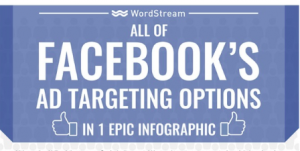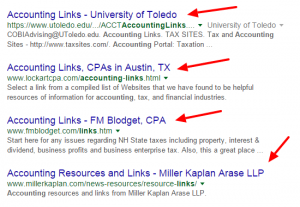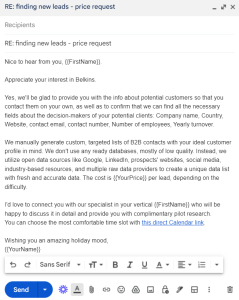This approach will unlock first-party data strategies you can utilize across your marketing channels.
Creating a data-driven marketing strategy can be intimidating. In my experience, a marketing strategy hinged on first-party data drives better business results. I’ve supported clients across all stages of creating a data-driven marketing strategy — from discovery and implementation to measurement and optimization. This article will discuss a four-step approach to creating a first-party data strategy.
1. Discovery
The discovery stage involves learning, documentation and shared learning phases.
Learning phase
Discovery shouldn’t feel like halting progress, although it’s a good time to reflect and re-set. The first exercise is to step in the customers’ shoes. Find the journeys they take. Where do they get stuck? When do they reach “goals” (across funnels)?
Enter the website the most common way, based on site analytics data (direct, search, referral, email, etc.). When needed, clear your cookies so you are treated as a first-time visitor. Continue through the site, taking action when prompted.
Documentation phase
Document the steps on the journey. This should help you know the success metric you want media to drive (i.e., form submissions, orders, or event visits/time spent on certain pages). Hopefully, existing campaigns are using these milestones. If not, start tracking and monitoring. Then, match these steps with where data is collected and which systems store this data.
Is there a CRM system collecting leads? What ecommerce tool is used, and what other systems does it send to? Map this out as another documentation guide.
Lastly, collaborate with other departments to share these findings and ensure data is usable in marketing tools. IT departments and product teams are the most common teams we collaborate with during this phase.
There could be ongoing workstreams that you can assist with, or most commonly, you will need assistance from other departments to implement.
Shared learnings
A thorough discovery process can take time. For a banking client, discovery involved interviewing stakeholders across seven departments and auditing five of their marketing systems.
This resulted in creating various documentation, including a 70-page document with roadmaps, process recommendations, advice for setting up a center of excellence and reporting instructions. While it took months to create, the client successfully implemented and used the CDP for the last two years.
We often execute a maturity audit to find an area of focus for the client (either a marketing channel they haven’t tapped into or a feature within an existing tool they are paying for). This involves auditing their marketing system and collaborating with our main stakeholders to understand goals.
A technology client was underutilizing content features in their CDP. We created a taxonomy of their products to input so they could create audiences off content affinity and recommend content to on-site users.
2. Implementation
Planning
With your objectives known from discovery, you can build a plan around the components required to achieve those objectives. Remember, the “goals” found during your discovery should be your KPIs. Consider the following areas during this phase:
- Channel.
- Audience.
- Messaging.
- Timing.
- Goals.
Ensure your team has adequate resources for sizing and planning audiences to give budget recommendations. Your media buyers can handle the rest in the same way they typically buy addressable media. Overall, ensure you’re filling the gaps found during discovery.
Set-up
This can involve setting up the connections between systems for our client and creating the audience logic or rules in the systems. For example:
- A CPG client wanted to increase memberships in their loyalty program. We designed a solution to import loyalty data fields into their CDP so they could create a seed audience for Facebook marketing.
- Another financial publisher client wanted to run a cart abandonment campaign. They already had data available in their tools and utilized us to set up audiences correctly and do an A/B test.
Testing should be a critical consideration during the planning phase — whether it’s A/B testing multiple versions of a creative or a hold-out group to validate the media spend.
Planning a test ensures you have set up the campaigns in a way conducive to reporting results. Even without a test in place, this step guarantees you will understand the results.
3. Measurement
The most data-centric part of the process is measurement. We recommend you think about measurement in two ways — delivery and performance.
Delivery involves making sure the message is reaching the users. For email, look at deliverability metrics as the campaign is launching. This is important, especially when implementing an ESP. You want to ensure your rules in the new ESP match and your IP reputation remains strong.
For paid campaigns, it’s looking at reach and how your budget is pacing compared to the remaining days left in the campaign. If channels are underdelivering, you can optimize that spend elsewhere.
4. Optimization
Creating benchmarks from previous performance will help you understand how the marketing efforts are performing. These benchmarks then allow you to optimize within and between channels.
If a test is in place, have a checkpoint for when results will be statistically significant. Having a hold-out group for the cart abandonment campaign mentioned earlier allowed us to prove the value of sending the incremental email.
And while low performance or stagnant results are disappointing, sometimes your biggest lesson learned comes from failures. Your next data-driven strategy can often be based on results from your existing campaigns. Set yourself up to have feedback loops to easily repeat these phases with each new plan.
Final thoughts
This approach will unlock first-party data strategies you can utilize across your marketing channels. Going through this process will create a great reference for new employees and partners. Keep your strategies updated as your business evolves.
The implementation and measurement phases should always be done for each planning cycle. Staying in the habit of doing so will result in a “continuous improvement” cycle.
The post An approach to unlocking first-party data strategies appeared first on MarTech.
MarTech(28)
Report Post



